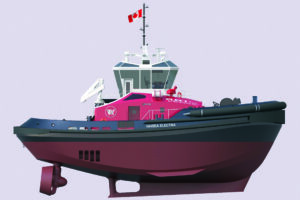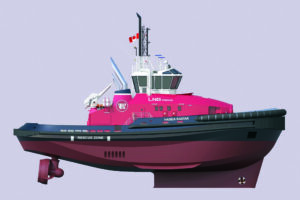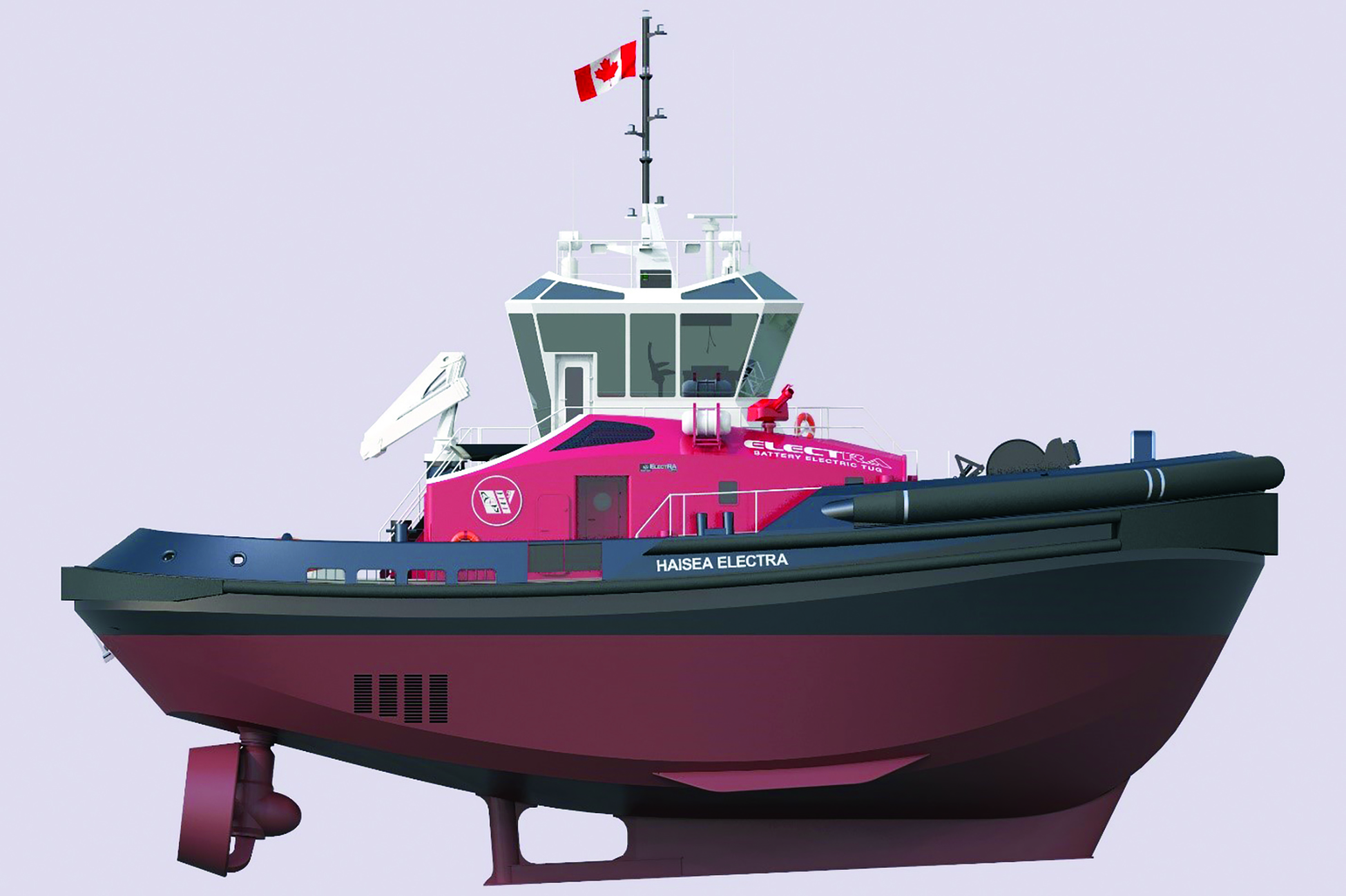In 2019, HaiSea Marine, a joint venture partnership between the Haisla Nation and Seaspan, was awarded a contract with LNG Canada to design, build and operate escort and harbour tugs required for LNG Canada’s export facility in Kitimat. Various marine and land-based positions will be created as a result, providing long-term employment to community members interested in a maritime career.
The tugs are being designed by Vancouver-based naval architects and marine engineers Robert Allan Ltd. and feature leading-edge technology. What makes them so special will be the use of battery-electric power and natural gas instead of diesel fuel to form one of the greenest tug fleets ever assembled.
At 28 metres in length, with approximately 70 tonnes bollard pull and 5,240 kWh of battery capacity each, the first-of-class ElectRA 2800 battery-electric harbour tugs will perform most of their ship-berthing and unberthing missions on battery power. They will be able to recharge from dedicated shore charging facilities at their berths between jobs, effectively reducing emissions to near zero.
The larger RAstar 4000 DF vessels will be the most powerful Azimuth Stern Drive (ASD) escort tugs on Canada’s West Coast, ranking among the world’s highest-performing escort tugs. At 40 metres in length and with over 95 tonnes of bollard pull, they will generate indirect forces of approximately 200 tonnes. These tugs will perform most of their missions using natural gas as their primary fuel.
As a fleet, these new tugs are expected to reduce carbon dioxide emissions by up to 10,000 tonnes per annum compared to diesel-powered alternatives, with major reductions of nitrogen oxides, sulphur oxides, carbon monoxide and particulate matter.
“Seaspan and the Haisla have hundreds of years of combined experience in these waterways,” said Captain Jordan Pechie, Senior Project Manager, HaiSea. “Our mandate is to operate at the highest level of safety and environmental standards, which will allow this legacy to thrive for generations to come.”


